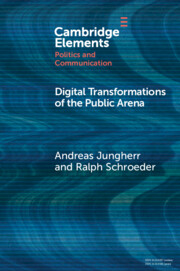Element contents
Digital Transformations of the Public Arena
Published online by Cambridge University Press: 23 December 2021
Summary
- Type
- Element
- Information
- Online ISBN: 9781009064484Publisher: Cambridge University PressPrint publication: 27 January 2022
References
- 11
- Cited by



